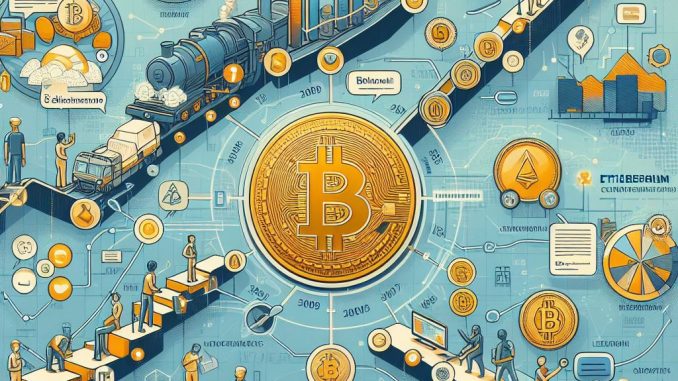
1. **Utility Tokens: Fueling Ecosystems:**
– Utility tokens serve a specific purpose within a blockchain ecosystem, providing access to certain functionalities or services.
– In 2024, the significance of utility tokens is highlighted as they play a crucial role in powering decentralized applications (DApps) and facilitating transactions within specific blockchain networks.
2. **Governance Tokens: Empowering Decision-Making:**
– Governance tokens grant holders the right to participate in the decision-making processes of decentralized autonomous organizations (DAOs) and other governance structures.
– The rise of governance tokens signifies a shift towards community-driven governance models, where token holders influence the development and direction of decentralized projects.
3. **Staking and Yield Farming: Incentivizing Participation:**
– Staking involves locking up cryptocurrencies to support the operations of a blockchain network, contributing to security and consensus mechanisms.
– Yield farming, on the other hand, incentivizes users to provide liquidity or perform specific actions in exchange for additional tokens.
– In 2024, staking and yield farming have become central components of tokenomics, encouraging active participation and engagement within blockchain ecosystems.
4. **Deflationary Mechanisms: Scarce and Valuable Assets:**
– Some cryptocurrencies incorporate deflationary mechanisms, such as token burns or buybacks, to reduce the circulating supply over time.
– This scarcity is designed to make certain tokens more valuable, aligning with the principles of traditional economics related to supply and demand.
5. **Interoperability Tokens: Bridging Networks:**
– Interoperability tokens facilitate the seamless transfer of assets and information between different blockchain networks.
– As the need for interconnected blockchain ecosystems grows, interoperability tokens have gained prominence, acting as bridges to overcome the siloed nature of various blockchains.
6. **Algorithmic Stablecoins: Stability in Volatility:**
– Algorithmic stablecoins leverage smart contracts and algorithms to maintain price stability, mitigating the volatility often associated with cryptocurrencies.
– In 2024, these stablecoins play a crucial role in providing a reliable medium of exchange and a store of value within the broader crypto economy.
7. **Regulatory Considerations: Navigating Compliance:**
– With increased regulatory scrutiny, tokenomics now includes considerations for compliance with evolving regulations.
– Projects are adapting to regulatory frameworks to ensure longevity and legitimacy, aligning with the broader financial landscape.
